How to grow cherry plum: tips for beginners
Content
Preparing the soil for planting
How to grow cherry plum? First of all, you need to choose the right place for its growth. To do this, it should be borne in mind that the plum does not tolerate drought, but, on the contrary, loves water very much. However, the rudiments of its flowers do not tolerate frost and winter in general.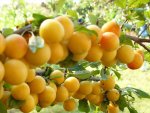
Cherry plum grows ideally in the south-western part of the site, as well as on the slope. The western part of the garden may also be suitable for growing a tree. In any case, the planting site of the crop must be reliably protected from the influence of strong winds, frost, lack or excess of water and other unfavorable environmental conditions.
Before planting plants, the soil must be fed with organic matter (manure or humus), as well as phosphates and potassium salt. After that, the entire territory must be dug up. It makes no sense to make fertilizers in black soil.
Sapling selection
Plum will only give a good harvest if it grows from a strong seedling. Therefore, the planting material is very important.
Both one-year and two-year-old individuals are planted in the ground. When buying them, special attention should be paid to the root system. She must be formed, powerful.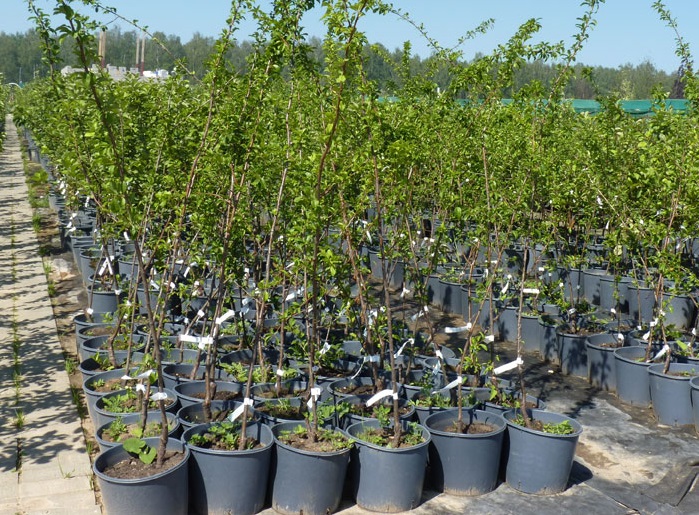
The main roots, 0.25 - 0.3 meters long, should be at least 5. Planting and grafted trees is also permissible. Such plants will bear fruit earlier than unvaccinated relatives and will "come to their senses" faster after frosty days.
Landing video
From the video you will learn how to plant this tree correctly.
Seedling preparation
Having acquired the right seedling, you should not plant it right away. First, you need to carefully examine its roots. All dry, damaged, diseased processes must be eliminated with a secateurs. Healthy organs need to be trimmed slightly. In this case, it is worth paying attention to the color of the organ. If it is brown, trim it to white. The roots of culture should be dipped in a special "chatterbox". This will help maintain the correct moisture ratio and prevent the roots from drying out if not stored or transported properly. To prepare a talker, you will need mullein and clay, which will need to be mixed in equal proportions.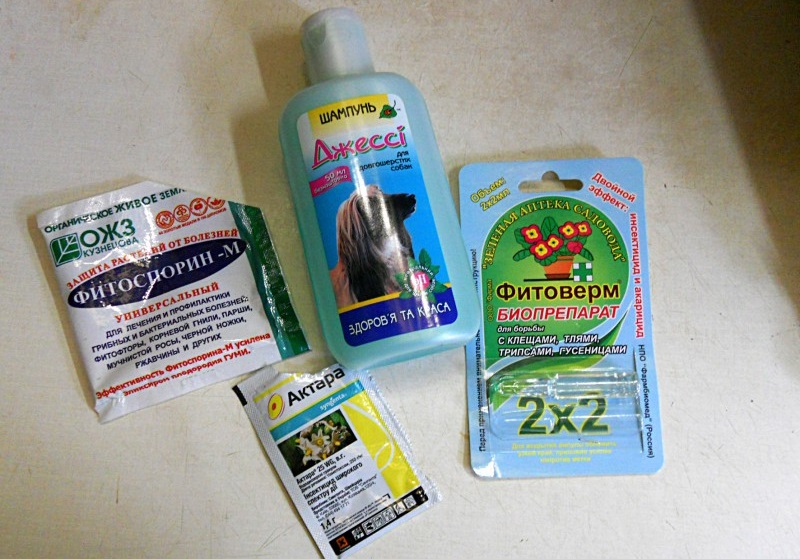
It is also permissible to "dip" the organs in a solution of "Aktara" or another from pests and parasites.
Landing scheme
You can harvest a healthy and rich harvest only by correctly placing crops on the site.
The distance between individuals is determined by the weather conditions of the region of their growth and from the fertility of the land. In the south, when planting plants in black soil, it is worth keeping a 4-meter distance between them, while the gap between the rows should be 5 meters. For the northern territories, these indicators are 3 and 5 meters.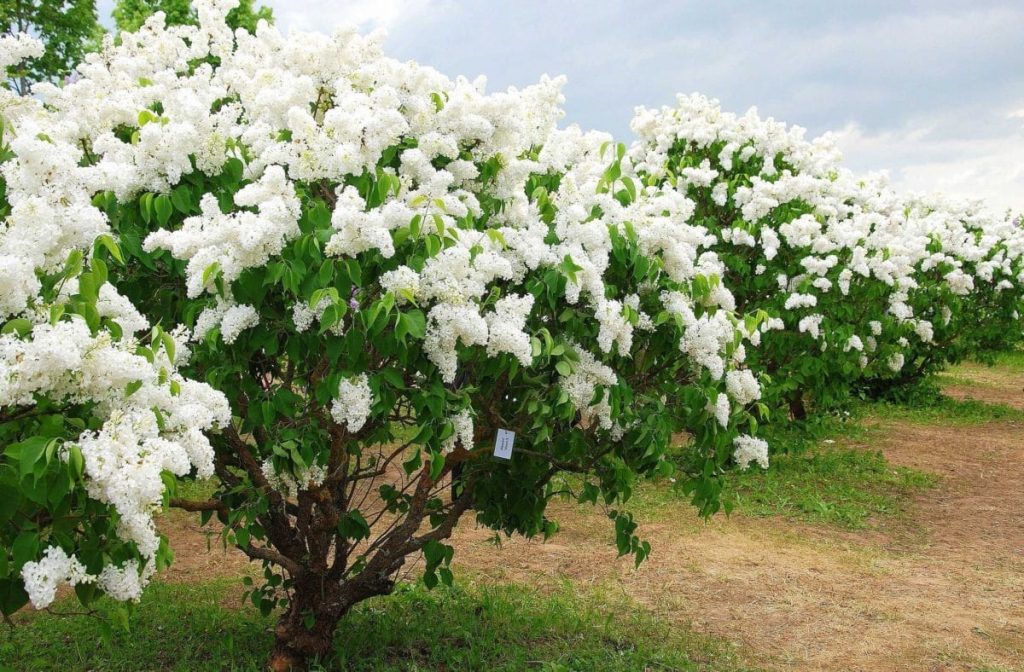
At first glance, it may seem that such an arrangement of crops will help save territory, but this is a delusion. In the case of active growth, the place will become scarce. As a result, the tree will simply slow down development.
Therefore, depending on the type and variety of crops, they are seated in this way: actively growing - 7 meters between individuals and 4 between rows, medium-growing - 5 and 3 meters, respectively, and weakly growing - 4 and one and a half meters.
When planting, it is worth considering the fact that the plants will need a pollinator. Best of all, trees are able to pollinate winter-hardy crops that bloom at the same time as cherry plum. In this case, the pollinated plant should be at a distance of only a few meters. Only then will the pollination be successful.
Landing dates
This type of plum can be planted both in autumn and spring. At the same time, it is better to have time to hold this event before April. After all, then the culture will not yet begin to dissolve its buds. As for autumn, you need to plant trees before mid-September (or at least a month before severe frosts).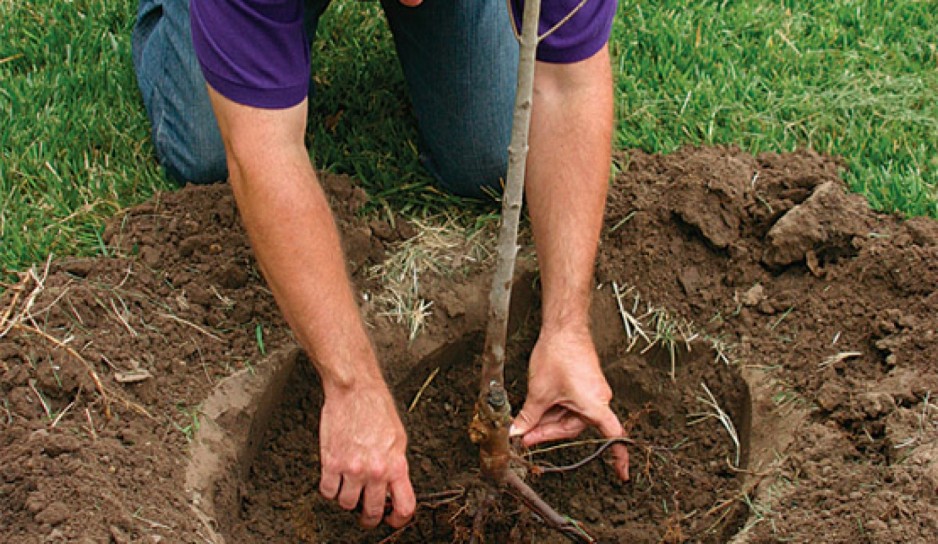
Late spring planting will lead to frequent diseases and a slowdown in fruit, and late autumn planting will negatively affect the root, as a result of which the individual may simply die.
Planting depth
The root of the seedling should always be at ground level. If the depth is not very strong, the roots will be exposed. As a result, "thickets" are formed. If planted too deep, the seedlings can begin to wilt, especially if they grow in heavy soil. A slight excessive deepening is possible in sandy or pebble areas due to their structure.
Care after landing
After planting, a growing seedling is needed in such activities for caring for it:
- Regular sufficient watering;
- Removal of weed crops;
- Loosening the soil;
- Mulching the earth with compost or humus with chalk or dolomite flour;
- Timely pruning of branches;
- Fight against parasites and diseases.

Protection from pests and diseases
Cherry plum is prone to gray rot, brown spot, smallpox, rust and gum flow.
The culture is usually attacked by sapwood, bark beetle, downy silkworm, moth.
Although the plant is considered relatively resistant, fungi also love it. They usually provoke powdery mildew and monilial burns.
To protect the tree, it is worth carrying out preventive actions: remove and burn infected plant parts, remove old bark and infected fruits, and get rid of weeds. Stem wounds are usually treated with dissolved copper sulfate.
Tree formation
Immediately after planting, they usually begin to form the crown of the plum. Everything is taken into account: the number of branches that form the skeleton, their density, the formation of daughter fruit-bearing branches. Most often, pruning leads to the formation of a non-tiered or cupped crown.
It is most effective to prune the crown in the spring before the buds begin to bloom. At this time, organ pruning will bring the least pain to the culture.
Accidentally removing more branches will not reduce Cherry's yield. Dry and painful organs are removed first, as they are potential carriers of disease. The pubescent non-fruiting branches are also subject to elimination.
Fertilizer
Cherry plum can be harvested like other plums in the middle and late summer.
After that, in the fall, under each tree it is necessary to make additional fertilizing of organic nature (half a bucket of compost or humus per unit area). After the plants have flowered, in early spring and in the middle of summer, it is worth fertilizing the crops with urea. The next top dressing provides for the introduction of potassium in the amount of 30 grams per unit area.
Watering
Watering is extremely important for cherry plum. Without them, trees will not be able to grow and develop.
After planting and pruning, juveniles should be watered abundantly.
The watering norm for adult plants is considered to be 4 buckets of water.
It is worth moistening the soil around the trees in spring and early summer (3 times in total).
Winter
Winter frosts negatively affect fruit: roots and bark. The bright sun often provokes burns, and snow can break tree branches.
Therefore, in late autumn it is necessary to mulch the roots with leaves. This must be done before the frost begins, but not too early. After all, the trunk can be damaged and rot.
The first snow is laid on top of the mulch as high as possible.
Soil processing is completely finished in the summer. Phosphorus, which is introduced in August, will help the plant survive the winter.
It is necessary to whitewash the tree trunks, its shoots and forks. The tree itself should be covered with burlap.
It is not difficult to grow and care for cherry plum.
Video "Leaving"
From the video you will learn how to care for this tree.



